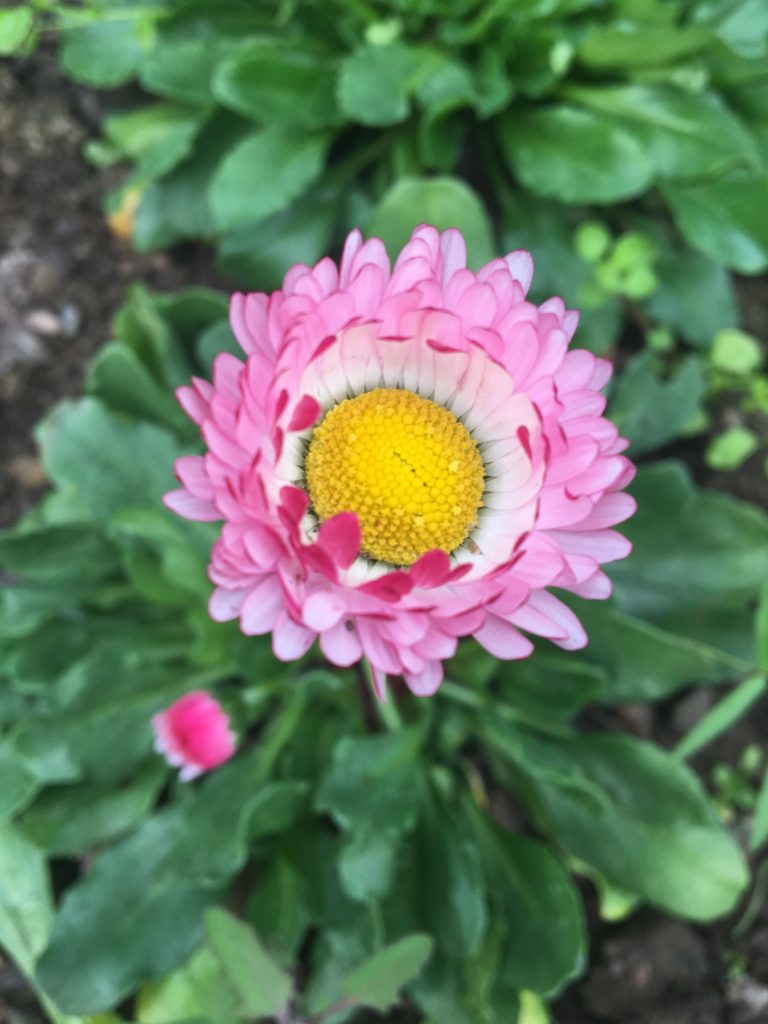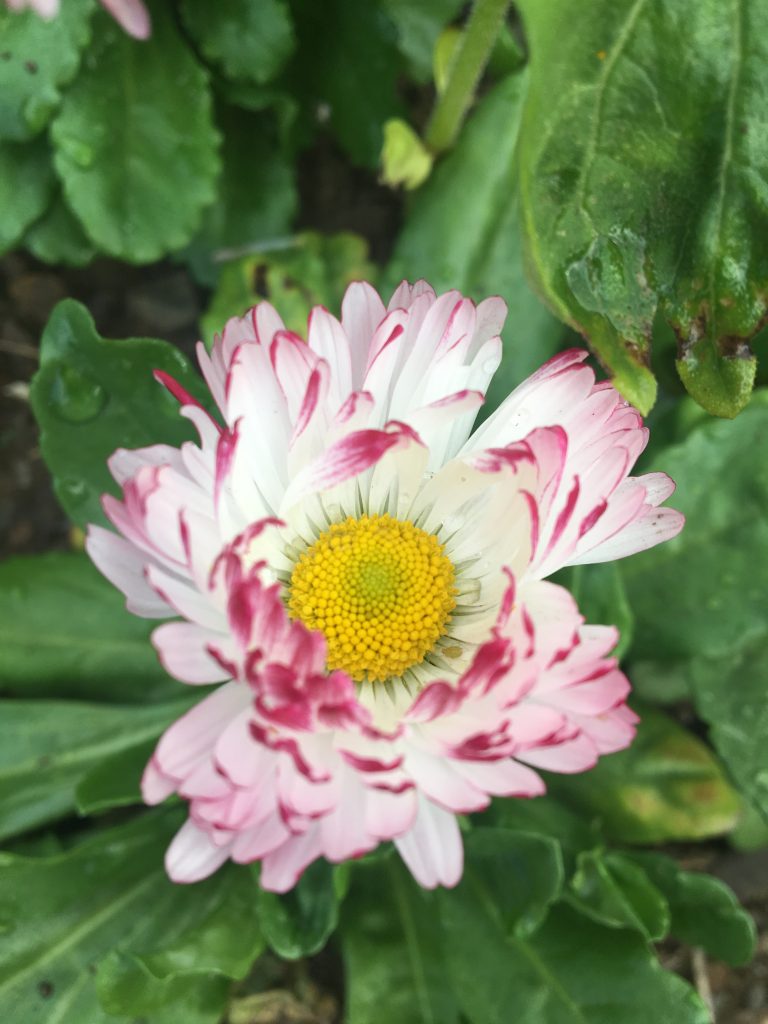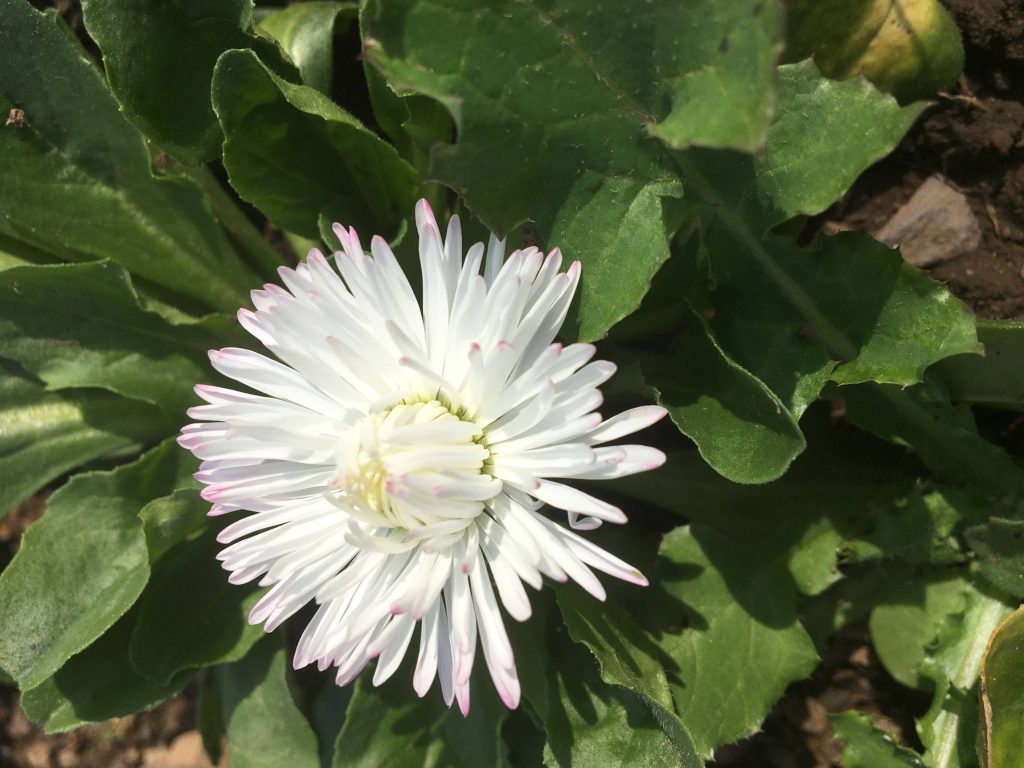“Oopsy daisy !”
How many of you have ever used this exclamation? Do you know where it was originated? “Oopsy Daisy!” is an exclamation used when little kids stumble. It started from “whoops-a-daisy!” from the 1800s and eventually transformed into “oopsy daisy” so we can imagine how far daisies have come to make our life a bit more meaningful. This expression is particularly used to help the child see they haven’t hurt themselves, and prevent them from dissolving in tears and often, to help get them back on their feet again. God has always been surprised us with exotic species and this time he sprinkled daisies.
Bellis Daisy/Common daisy/Gulbhaar
The range of daisies available now is the result of centuries of hardship by nurserymen across Europe. Daisies were one of the first flowers to go extensive cultivation for ornamental displays in the garden.
Bellis Daisy is a perennial plant, member of the Asteraceae family. Bellis is a genus of flowering plants, mostly perennials, that belong to the sunflower family (Asteraceae) and are native to Europe and northern Africa. What is Bellis? “Bellis” is the Latin word for “pretty” or “beautiful” which is the sole reason for naming children after daisy.
- Basically, daisies are composite flowers that actually consist of two flowers combined into one. The inner section is called a disc floret, and the outer petal section is called a ray floret. Because daisies are composed of two flowers that blend together so well, they also symbolize true love. It also symbolize purity and innocence.
- The colors range from white, red and pink, often used as ground cover, or at the front of a border as their foliage is as glossy and attractive as the flower itself.
- In Old English, daisies were referred to as “day’s eye” because at night the petals close over the yellow center and during the day they re-open.
- Daisies are seen as a permanent source of inspiration to artists from many cultures such as Shakespeare used a daisy chain in Hamlet to represent Ophelia’s innocence. Wordsworth also praised the daisy in his popular poem “To The Daisy.”



Benefits of Bellis Daisy
One of the most amazing benefits of growing plants is they naturally help to heal. they reduce stress levels and boost our moods.
- Daisies contain essential oils, tannins, mucous substances, flavonoids, bitter substances, organic acids, resins, and inulin.
- The active ingredients are found in all parts of the plant.
- Daisy has anti-inflammatory, tonic, emollient and mild astringent properties has become an herbal remedy for bronchitis, cold. and other inflammation of the upper respiratory tract
- Since years, scientists have been exploring benefits of herbs in treating chronic diseases. Recent research of 1994 has been looking at the possibility of using this plant in HIV therapy and for various other disorders.
- It has also been used in treating painful menstruation due to its antipasdomadic action on the uterus and its muscles.
- Herbs are very much useful in treating skin diseases such as eczema.
- One can also reap benefits of vitamin of daisy in the form of herbal tea made from its petals.
- In folk medicine, it was often recommended to eat the fresh leaves to stimulate nutrition uptake, due to the bitter substances found in the herb.
- Other than medicinal uses, leaves and petals of daisy can be eaten in salads both raw and cooked.
- One can also use this as an insect repellent spray made from an infusion of the leaves.
- ( please refer to your doctor or herbalist before implementing anything.)
DAISIES in Garden
Bellis flowers can be cheerful and exotic addition to the garden. They bloom from early summer to mid-summer and in favorable conditions, its flowering seasons can last several months.
Generally speaking bellis are easy to grow and when cared properly, it will keep flowering throughout the season making your garden an iconic place for butterflies, bees and other insects.


- Daisy prefers prefer growing in full sun exposure of at least six hours of direct sunlight when grown in a cool summer area.
- Since soil holds all the necessary nutrients required for a plant, this ornamental perennial loves rich fertile soil with good drainage. Use organic material such as such as shredded leaves, dried grass clippings, well-rotted compost or aged manure to enrich the soil.
- Hot dry seasons are not made for daisies so keep watering regularly during the active growing seasons.
- It’s an easy plant to grow in potted containers. The small rosettes can be placed near any window, other than a window providing direct sunlight.
Don’t wait for a perfect moment, gift someone a daisy with a message of hope and renewal of a life that is as innocent as a child. I am pretty sure the expressions of the recipient would be priceless. I am sure there might be more utilities to this flower that makes it demanding amongst the people. We will keep exploring and updating. Thank you for reading.
Daisies make the best friend in the world.
